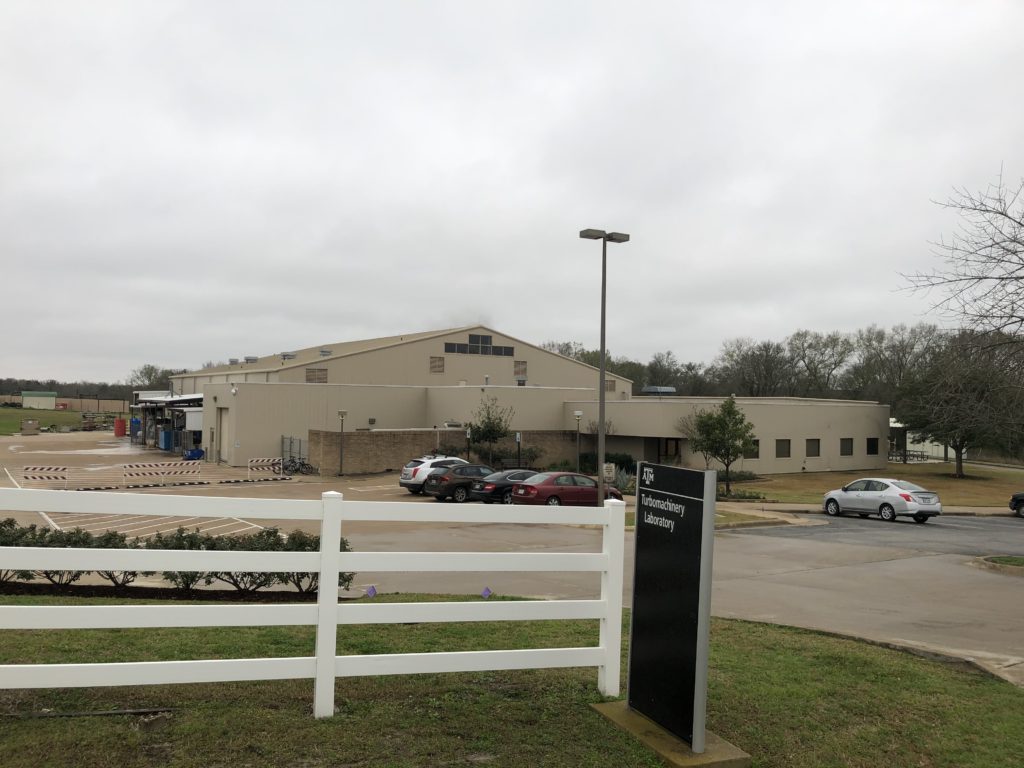The Turbomachinery Laboratory (see figures below) is located on the outskirts of the Texas A&M University campus in College Station, Texas in a 30,000 ft2 building. This laboratory building houses 12 test cells with 500 ft2 of laboratory space apiece. Dr. Petersen’s 2600-ft2 laboratory space comprises two of these test cells plus an additional space that was added to the building to accommodate the shock-tube facility to be used in the present research. In addition to these research laboratory spaces, the Turbo Lab has a dedicated machine shop, electronics build-up area, graduate student offices, faculty offices, and an extensive high bay area. Support for the Turbo Lab comes from the Laboratory hosting two symposia—The Turbomachinery & Pump Symposia annually and The Asia Turbomachinery Symposium biannually. Further details on the symposia and the structure and activities of the research center can be found at TEES Turbomachinery Laboratory.

Turbomachinery Laboratory building at Texas A&M University.
